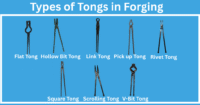Advantages and Disadvantages of Spur Gears
Published: 27 Sep 2025
Spur gears are one of the most widely used gears in mechanical systems. Recognizable by their straight teeth cut parallel to the gear axis, they are primarily used to transfer power between parallel shafts. Their simple design, high efficiency, and reliability make them ideal for a wide range of applications, from small devices like clocks to large industrial machines. Understanding the advantages and disadvantages of spur gears is essential for engineers and hobbyists when choosing the right gear for a project.
Advantages of Spur Gears
- Simple Design and Easy Manufacture
Spur gears have a straightforward design that is easy to produce with high precision. This simplicity reduces manufacturing costs and allows for compact installations.
2. High Transmission Efficiency
The direct engagement of teeth ensures minimal energy loss, providing efficient power transmission. Spur gears are especially effective in systems requiring precise synchronization and motion.
3. Good Load Capacity
These gears can handle moderate to high loads, making them suitable for both small mechanical devices and heavy-duty industrial machines.
4. No Axial Thrust
Since the teeth are parallel to the gear axis, spur gears do not generate axial forces. This reduces stress on shafts and bearings and increases system durability.
5. Reliable and Precise
The simple tooth design allows for accurate motion transfer and minimizes slippage. With proper maintenance, spur gears are highly reliable for long periods of operation.
6. Easy Maintenance
Spur gears are simple to clean, inspect, and replace if needed. This ensures smooth operation and reduces downtime for machines.
Disadvantages of Spur Gears
- Noise and Vibration
Spur gears produce noise and vibrations, especially at high speeds, because their teeth engage abruptly. This can be a concern in applications requiring quiet operation.
2. Limited Shaft Arrangement
They can only transfer power between parallel shafts and are unsuitable for non-parallal or long-distance power transmission.
3. Wear Under High Speeds
Continual high-speed operation may result in faster wear of the teeth, which may reduce efficiency and the lifespan of the gears.
4. Stress on Teeth
Direct contact between teeth causes stress concentrations, which can lead to wear or breakage under heavy loads.
5. Less Smooth Transmission Compared to Helical Gears
Spur gears are not as smooth as helical gears due to the sudden engagement of the teeth, which may affect applications requiring very smooth motion.
Conclusion
Spur gears are simple, efficient, and highly reliable, making them one of the most widely used gear types in mechanical systems. Their advantages include high transmission efficiency, easy manufacture, good load capacity, and no axial thrust. However, they also have limitations, such as noise at high speeds, stress on teeth, and restriction to parallel shafts. Understanding these pros and cons allows engineers and hobbyists to select the best gear type for their project, balancing performance, cost, and operational requirements.

- Be Respectful
- Stay Relevant
- Stay Positive
- True Feedback
- Encourage Discussion
- Avoid Spamming
- No Fake News
- Don't Copy-Paste
- No Personal Attacks

- Be Respectful
- Stay Relevant
- Stay Positive
- True Feedback
- Encourage Discussion
- Avoid Spamming
- No Fake News
- Don't Copy-Paste
- No Personal Attacks


